Are you trying to figure out the best landing page best practices that convert?
Landing pages play a crucial part in driving your conversions and helping meet your sales goals. But in order to be effective, there are some best practices that you should always bear in mind when designing your landing pages.
In this post, we’ll walk you through proven best practices for landing pages that actually convert and produce the results you expect.
Why Landing Page Best Practices Matter?
The average customer today has tons of options available when they’re looking for products, services, or solutions online. In order to grab your customer’s attention and be persuasive, you need to make a strong first impression.
Landing page best practices are a set of tried and tested rules that have produced excellent results for marketing professionals over time. So, if your current landing page is failing to convert well enough, chances are your page is missing some of the elements typically found in high-converting pages.
This is why it’s very important to make sure that your page is following the best landing page best practices, so you can meet your conversion goals.
The Best Landing Page Best Practices
Here’s a quick overview of our top tips for landing page best practices.
- Have Your Main Message (or CTA) Above the Fold
- Focus on One Conversion Action
- Benefits Over Features
- For Longer Pages, Use Multiple Calls to Action
- Design for Mobile
- Test and Experiment Big
- Optimize for Your Traffic Sources
- Leverage Social Proof
- Use Landing Page Templates
Let’s explore all of these in some detail.
1. Have Your Main Message (or CTA) Above the Fold
If a user clicks on your landing page, there’s never a guarantee that they’ll scroll and through the whole page. But, there’s a very good chance that they’ll read everything above the fold.
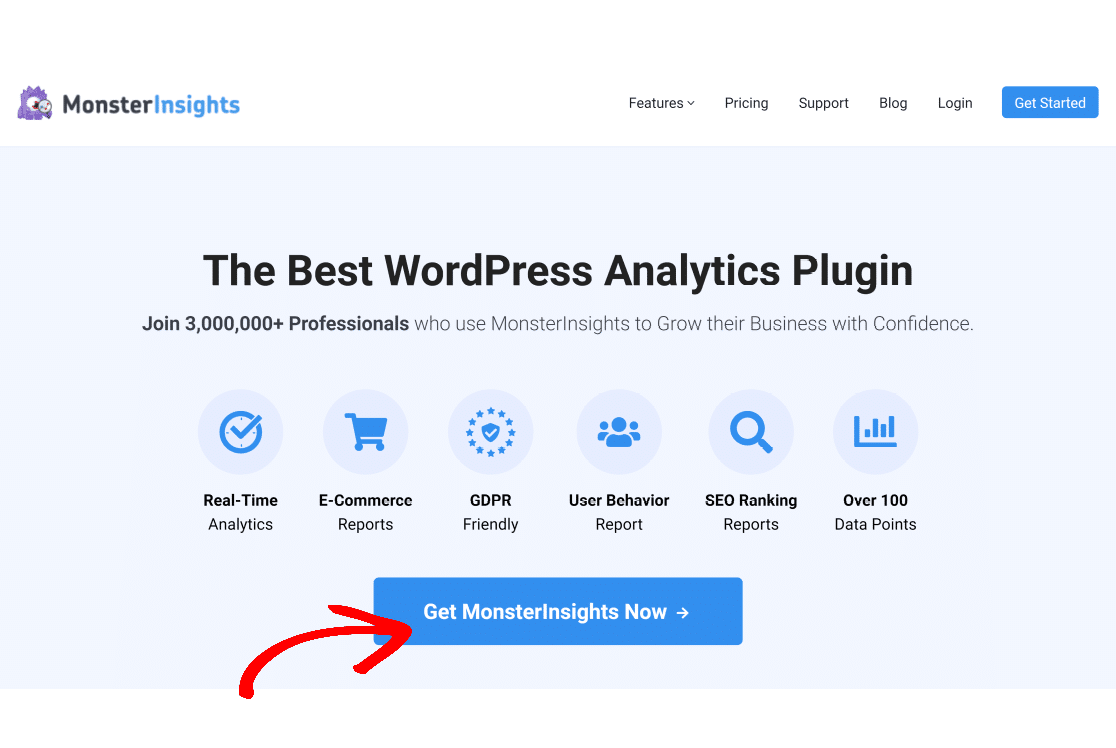
The concept of “above the fold” isn’t new – it’s a practice that newspapers have been following for centuries. Usually, the most important news and headlines make it above the fold, where they’re likely to get the most attention.
In the context of landing page design, the same theory holds true. Keep all your main messages, call to action, and headlines above the fold (which is the area of the screen visible without having to scroll down).
2. Focus on One Conversion Action
Every landing page should ideally be optimized for a single main goal. For instance, if you want users to download an eBook, then your page should have a clear download button above the fold.
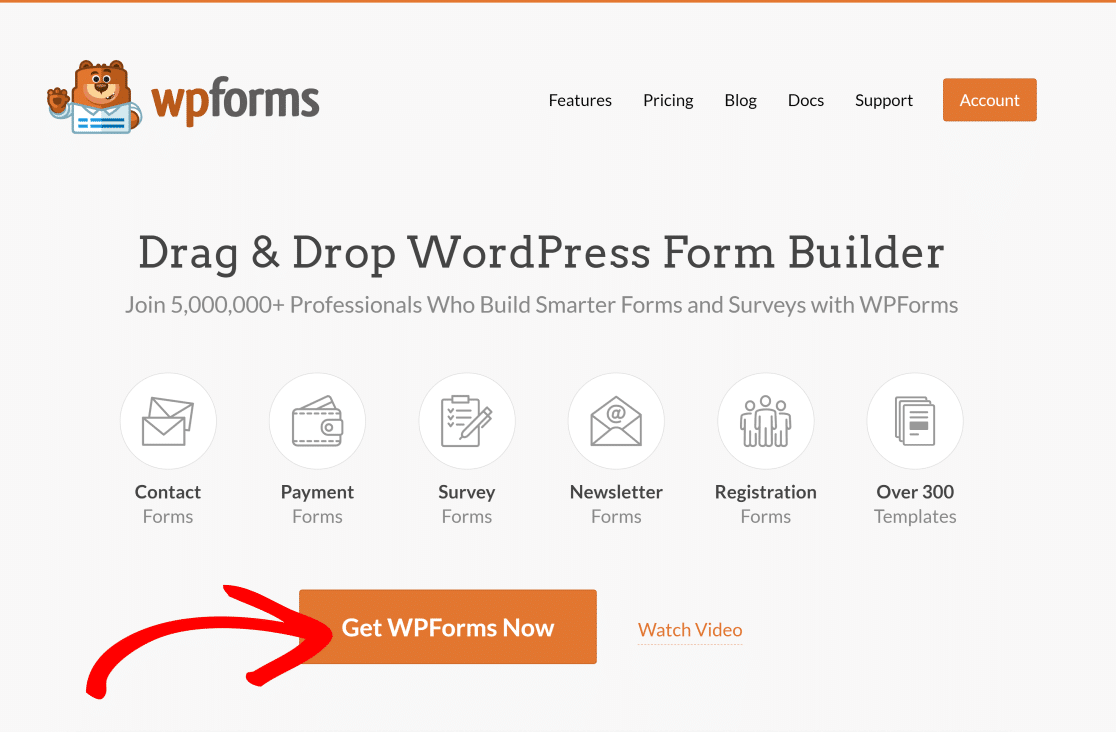
If you add too many options and actions that users can perform, it can be distracting for the users. Therefore, it’s generally more effective if your landing page is designed with one single goal in mind.
3. Benefits Over Features
Every user that reaches your landing page do so because they’re looking for a solution to a problem. Naturally, focusing on benefits that your product or service can provide is more relatable for your audience than a list of features.
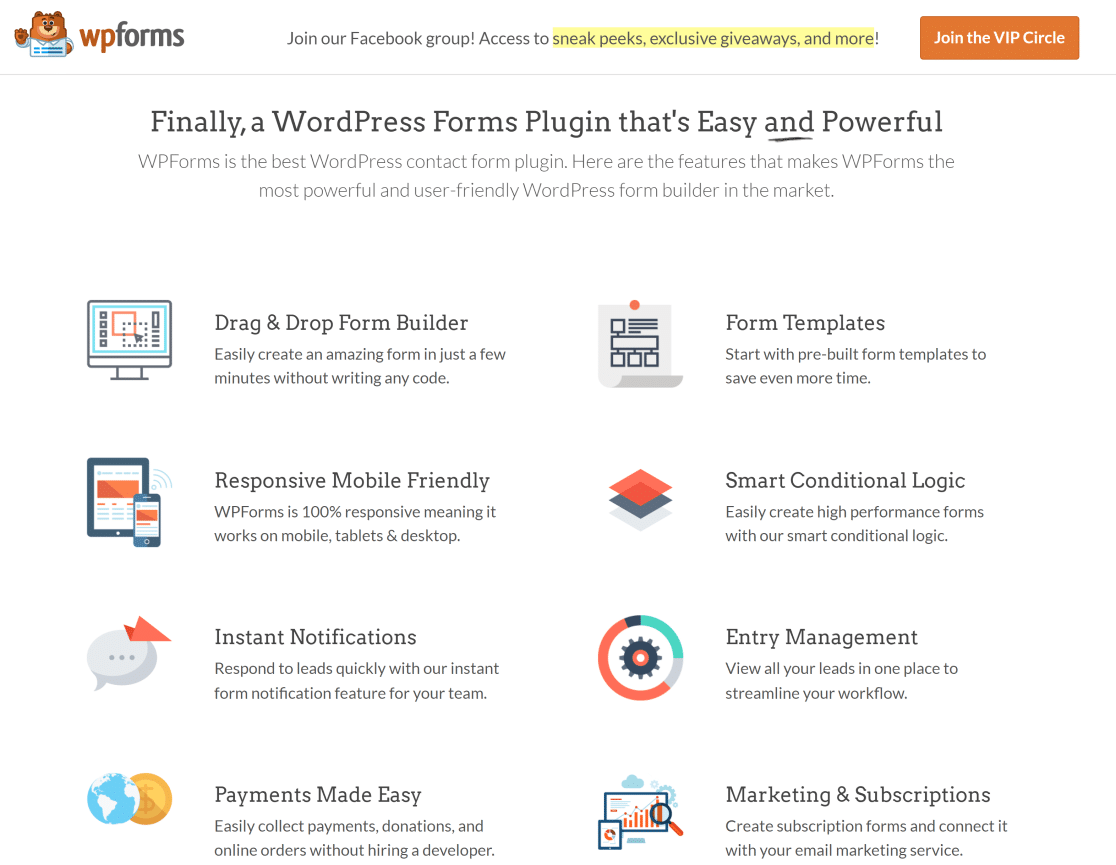
A good tip for emphasizing benefits is to think about the particular pain points of your audience and build off that knowledge. For example, WPForms caters primarily to users looking for an easy-to-use form builder plugin, and our landing pages reflect exactly that.
4. For Longer Pages, Use Multiple Calls to Action
This is not to be confused with the tip above. In most, cases, your first call to action should be above the fold. But if the user has to continue scrolling to be sold on the product, it can be very frustrating if they have to scroll back up to click your CTA when they are sold.
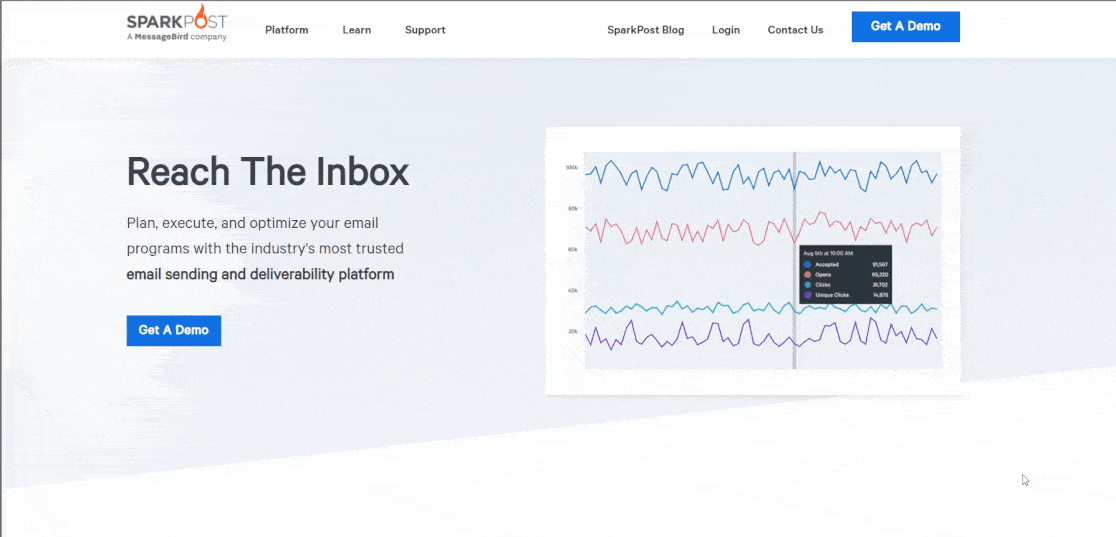
Keep in mind that you should still be focusing on a single conversion goal rather than giving users different options as they scroll down. Make sure that your CTAs are consistent in terms of color, font, layout, and even the text through the landing page.
5. Design for Mobile
Today, the number of mobile users has surpassed the number of desktop users. Still, many websites design pages for desktops because that’s the device they’re on when designing and developing.
It goes without saying that this is a mistake in most cases because landing pages that are poorly optimized for mobile can blow up when viewed on anything other than a desktop. And if you aren’t providing the best user experience to your users, you’re only going to be losing valuable opportunities and leads.
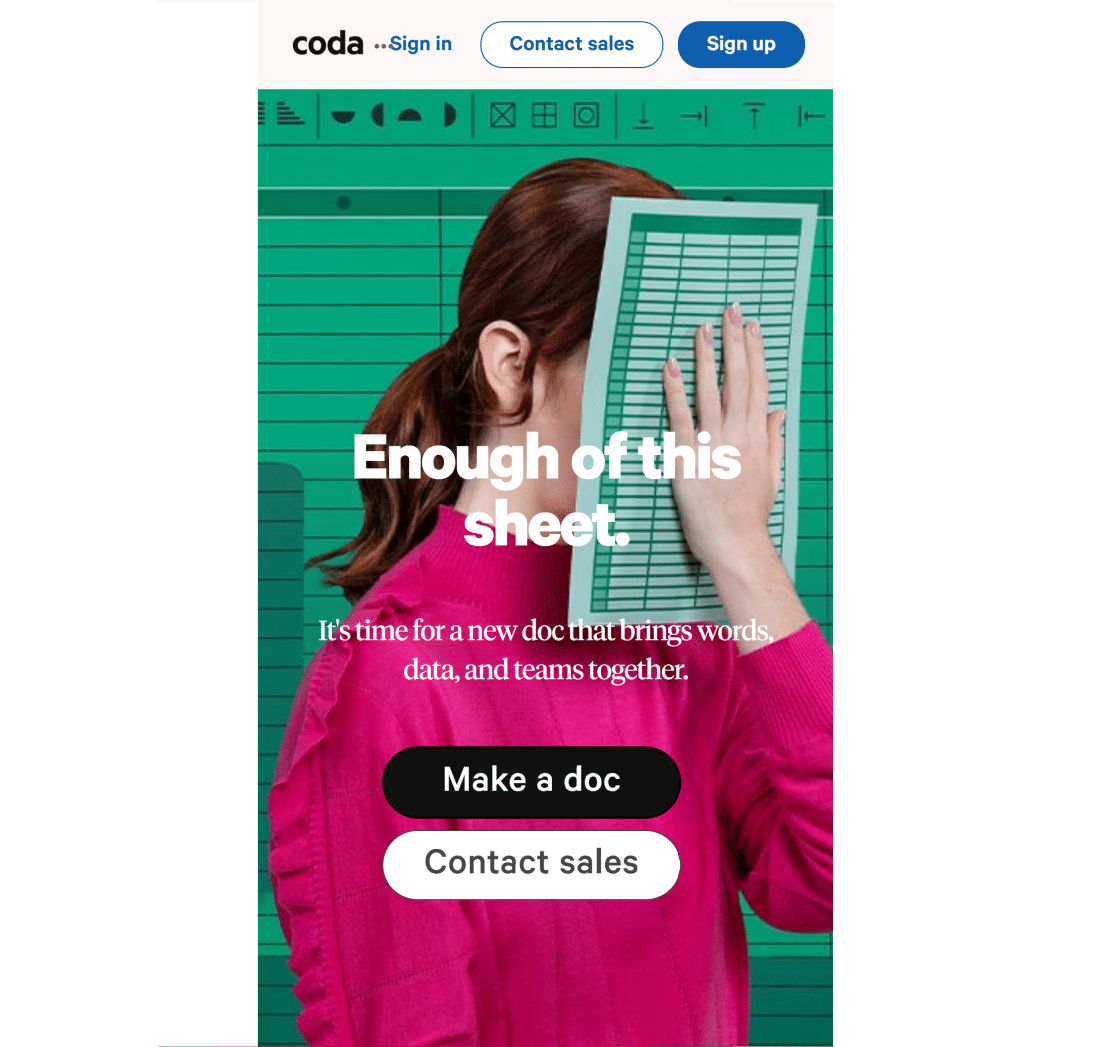
In some cases, however, it might make sense to still focus on desktops. For instance, B2B businesses and industries with an older demographic still prefer browsing the web on their desktops. As always, take into account your particular analytics data to ascertain the device preferences of your audience and optimize accordingly.
6. Test and Experiment Big
All too often, websites tend to be shy about experimenting with bigger elements of your site and only test the easier things like color changes. But this is a mistake.

Successful websites frequently experiment with different layouts, color palettes, headlines, and copies. This is important because not all experiments promise a high magnitude of returns.
For instance, changing the color of a button might help by a fraction of a percent. But redesigning the layout of your landing page to ensure the most streamlined user experience can have a significantly higher impact on conversions.
7. Optimize for Your Traffic Sources
It’s imperative that you understand the sources you’re drawing traffic from and build the page for it.
For example, SEO-optimized pages typically have a lower conversion rate than shorter, copy-oriented landing pages. This means that if you’re sending paid traffic to your landing page, then you’d want to convert that traffic. And that often warrants cutting out a chunk of the extra content that you’d normally add to draw organic traffic from search engines.
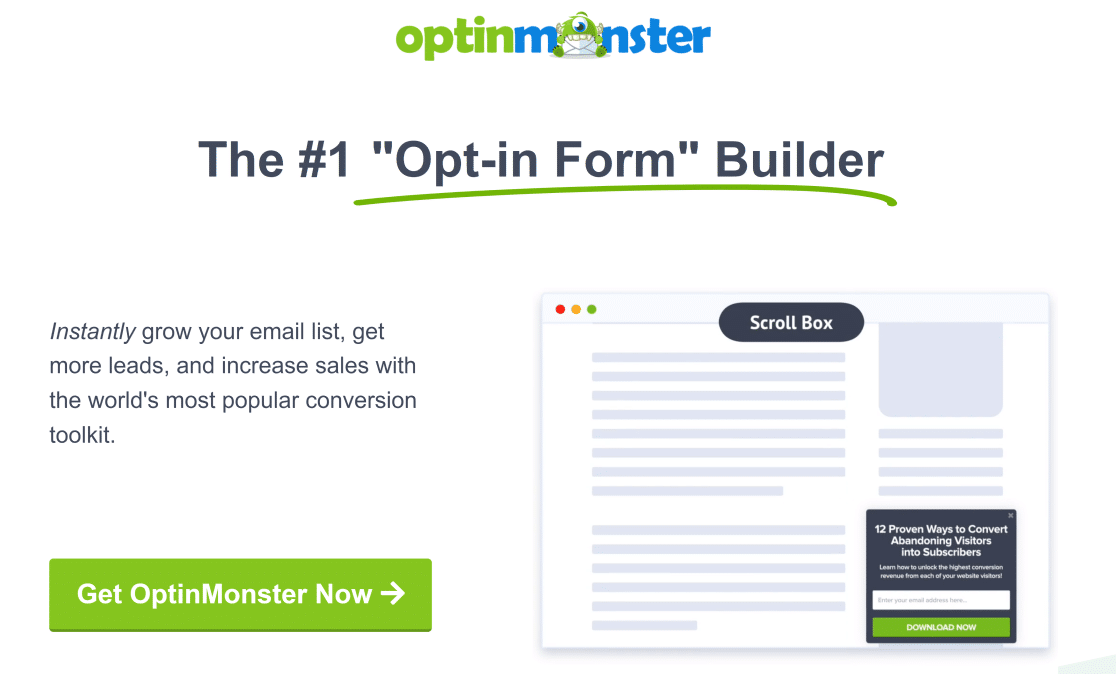
Instead, keep your landing pages with paid traffic sources shorter and more direct with clear conversion messages and actions.
8. Leverage Social Proof
Social proof is an incredibly powerful way of persuading your users to take an action. Everyone likes to belong and if your users have visible proof in the form of testimonials, reviews, and real-time purchase notices from other users, they’re highly likely to be the next ones to press that CTA button.
One of the best ways to utilize social proof for your landing pages is to use a free plugin called TrustPulse.
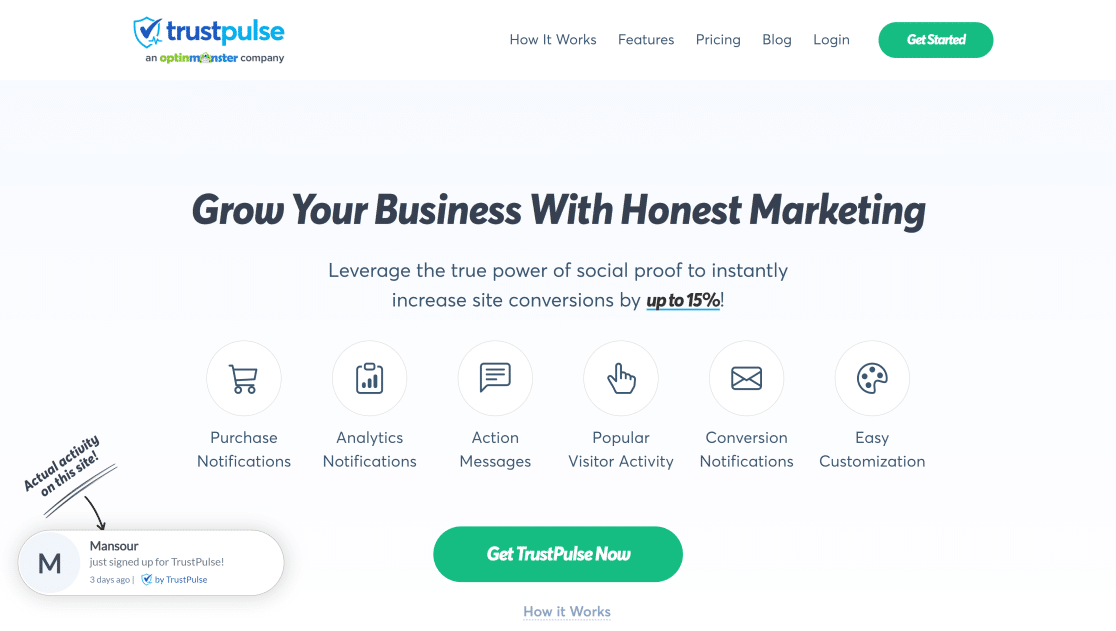
TrustPulse displays live customer activity on your site, which helps other active users trust you more and feel more comfortable doing business with you.
9. Use Landing Page Templates
It can be overwhelming to make landing pages that follow all of the suggested best practices all the time.
If you’re only starting out and don’t have a lot of prior experience designing high-converting landing pages, then it’s a good idea to use pre-made templates for your landing page.
SeedProd is the best landing page builder for WordPress. This tool is designed for beginners, so you can build great-looking pages that follow landing page best practices without touching a single line of code.
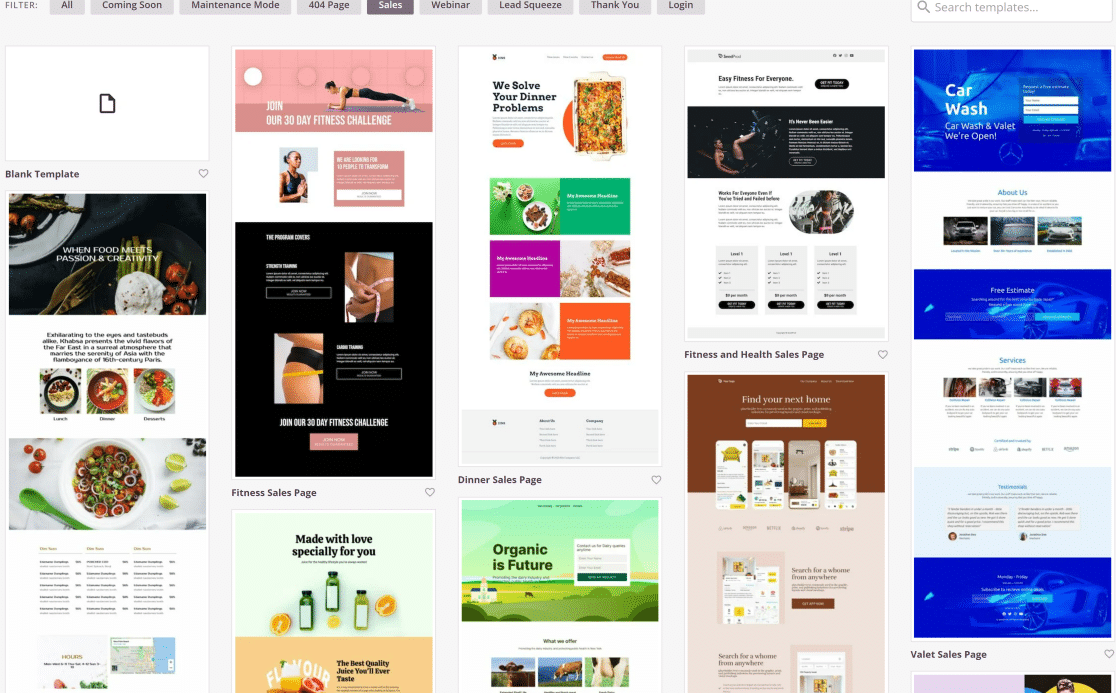
SeedProd features a drag and drop page builder and has over 100 pre-built landing page templates that are designed to maximize conversions.
Below, we’re using a landing page template for app sales, which perfectly mimics all the landing page best practices we’ve discussed above:
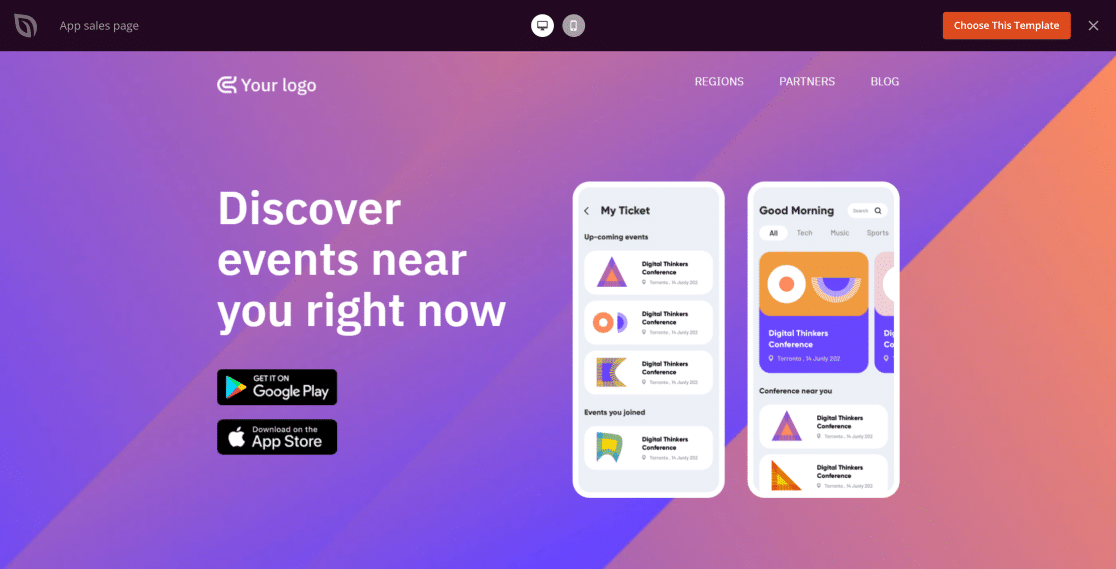
Plus, pages built with SeedProd are highly customizable. You can change pretty much every element of the page using the drag and drop builder.
When combined with additional tools like TrustPulse for social proof, landing pages made with SeedProd can skyrocket your conversions and sales in no time.
And that’s it! These are the 9 best landing page best practices (with 1 bonus tip) that are proven to convert and produce the results you’ve been pursuing for your website!
Next, Use Visitor Tracking to Understand Your Audience
Do you want to take a peek at your site visitors and see what they’re actually doing on your website? Check out our review of the best website visitor tracking tools to make more informed decisions when planning your marketing funnel.
You might also want to see our list of the best WordPress notification bar plugins that can help you display the latest announcements and promote coupons on the top of your page.
Ready to build your form? Get started today with the easiest WordPress form builder plugin. WPForms Pro includes lots of free templates and offers a 14-day money-back guarantee.
If this article helped you out, please follow us on Facebook and Twitter for more free WordPress tutorials and guides.
The post 9 Landing Page Best Practices That Convert appeared first on WPForms.
source https://wpforms.com/best-landing-page-best-practices-that-convert/

